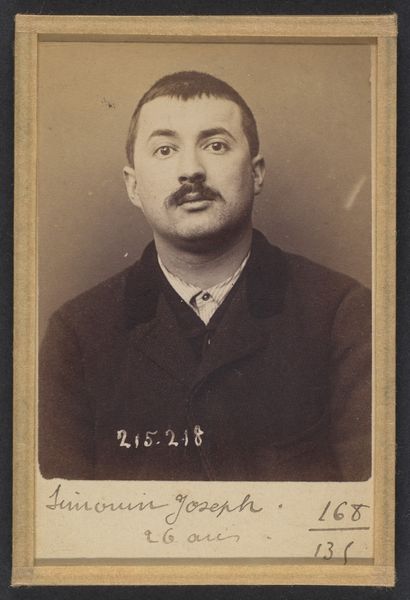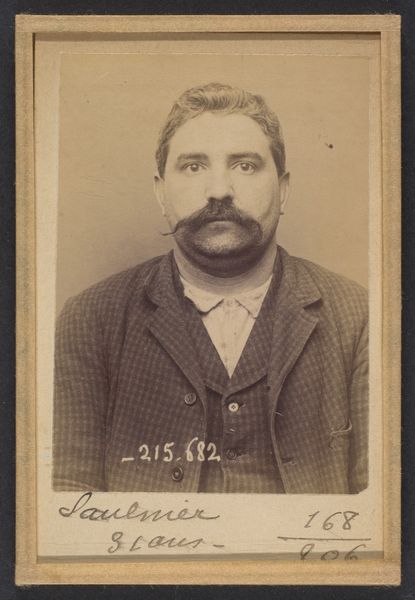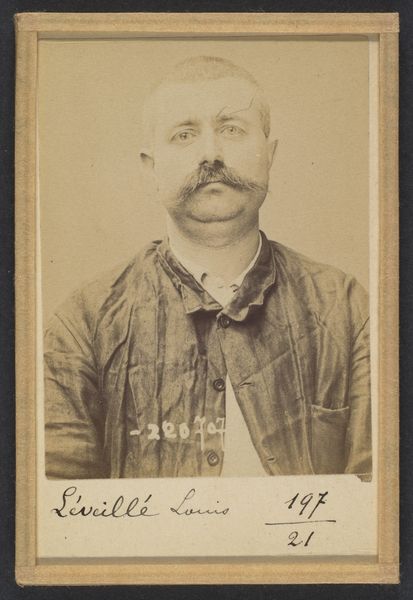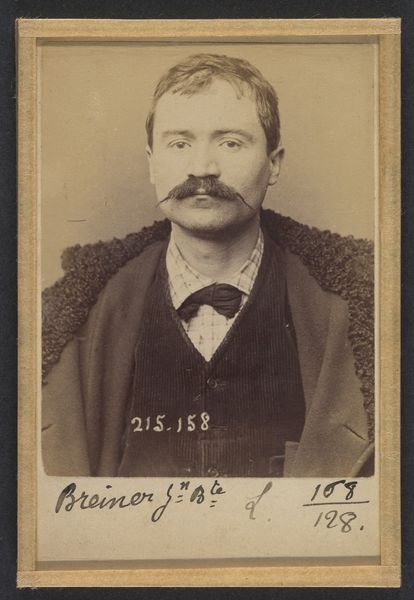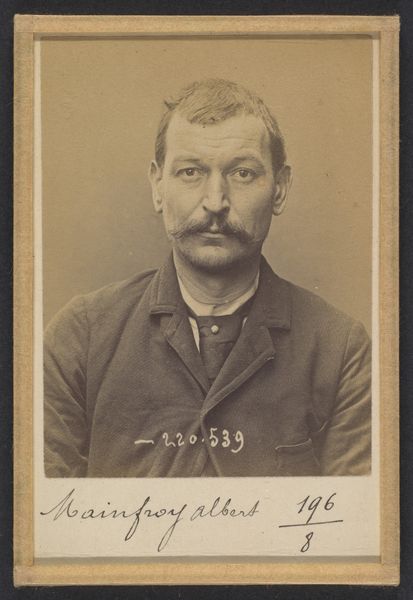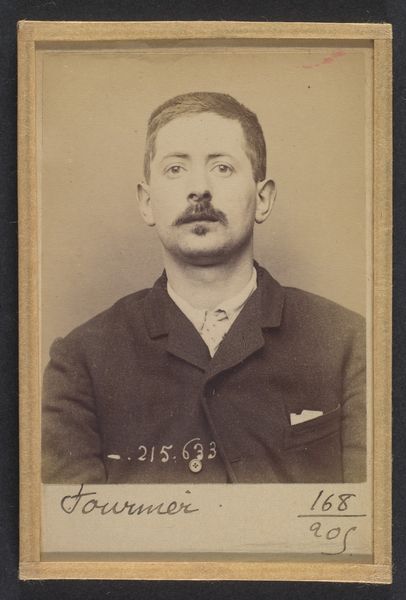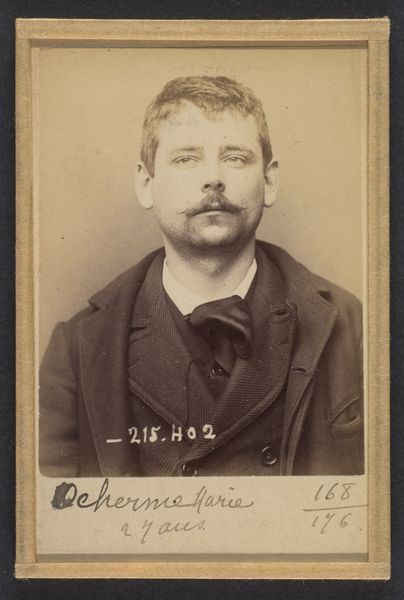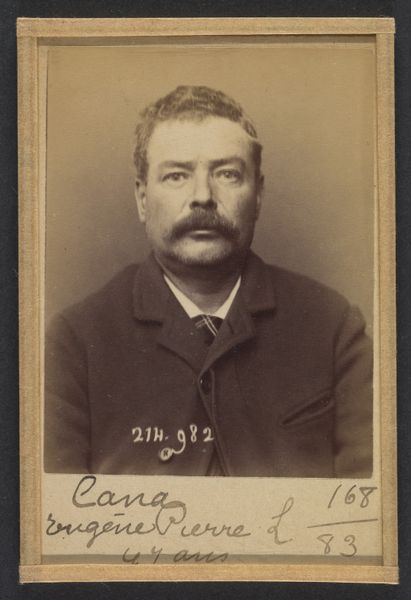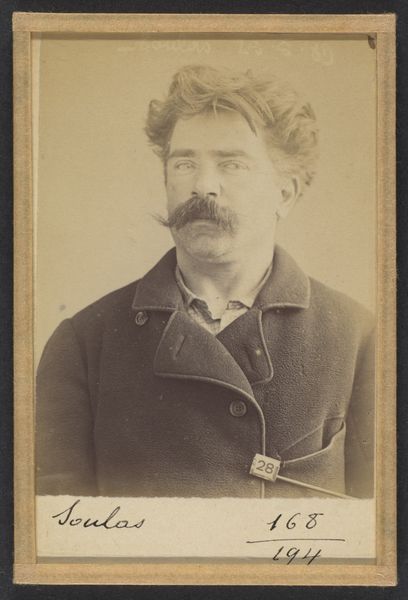
Tardieu. Marius (ou Maurice). 26 ans, né le 15/7/68 à Piolène (Vaucluse). Ébéniste. Anarchiste. 2/7/94. 1894
0:00
0:00
photography, gelatin-silver-print
#
portrait
#
african-art
#
photography
#
historical photography
#
gelatin-silver-print
#
men
#
realism
Dimensions: 10.5 x 7 x 0.5 cm (4 1/8 x 2 3/4 x 3/16 in.) each
Copyright: Public Domain
This mugshot of Marius Tardieu was made in 1894 by Alphonse Bertillon, using photographic materials and processes then in their relative infancy. Bertillon was a pioneer in applying photography to law enforcement, creating a system of identification that bears his name. The photograph’s sepia tones and somewhat soft focus speak to its historical context. But beyond its aesthetic qualities, consider how the photograph was made, as a systematic tool of surveillance and control. Photography became a method of documenting and categorizing individuals, particularly those deemed outside the norms of society. The image captures Tardieu, identified as a 26-year-old cabinetmaker and anarchist, which are crucial details in understanding the photograph's significance. His profession suggests a background in skilled labor, while his political affiliation places him in opposition to the established order. Ultimately, this mugshot is not just a portrait of an individual, but a reflection of the social and political tensions of its time. It invites us to think about the power dynamics inherent in the act of representation and the ways in which photography can be used to reinforce or challenge prevailing ideologies.
Comments
No comments
Be the first to comment and join the conversation on the ultimate creative platform.
